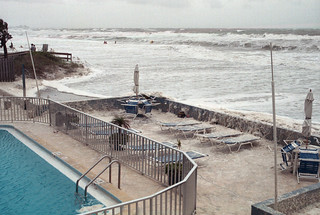Florida’s coastal ecosystems are home to some of the most economically, scientifically, and recreationally important species in the state. More than 70 percent of Florida’s most important recreational and commercial marine species spend a portion of their lives in estuarine waters that are surrounded by mangroves and salt marsh, and carpeted with seagrass, along with about 40 percent of Florida’s imperiled species.
Coastal ecosystems in Florida, like beaches, mangroves, and seagrass, are particularly vulnerable to sea-level rise. The low elevation of the coasts, combined with the flat topography of the state, allows tidally influenced waters to travel inland where their effects are not usually felt. Already, in some areas, regular high tides flood urban streets, pushing backwards through stormwater outlets that usually remove rain water.
Florida’s coastal ecosystems are considered endangered and at risk from alterations of the physical environment, degradation of water resources, incompatible fire management, introduced plants and animals, as well as sea-level rise. For many coastal ecosystems, one of the largest threats from sea-level rise is coastal “squeeze.” This happens when rising water causes habitats to shift inland and upland. Habitats can adapt to sea level rise in this way unless there is an obstacle in the way, such as a road, wall, or canal.
We can help coastal ecosystems adapt to sea level rise by getting out of the way of habitat migration wherever we can. Using living shorelines instead of seawalls where appropriate, removing abandoned infrastructure, and keeping construction well away from the shore are some examples of how we can help coastal ecosystems be more resilient.

